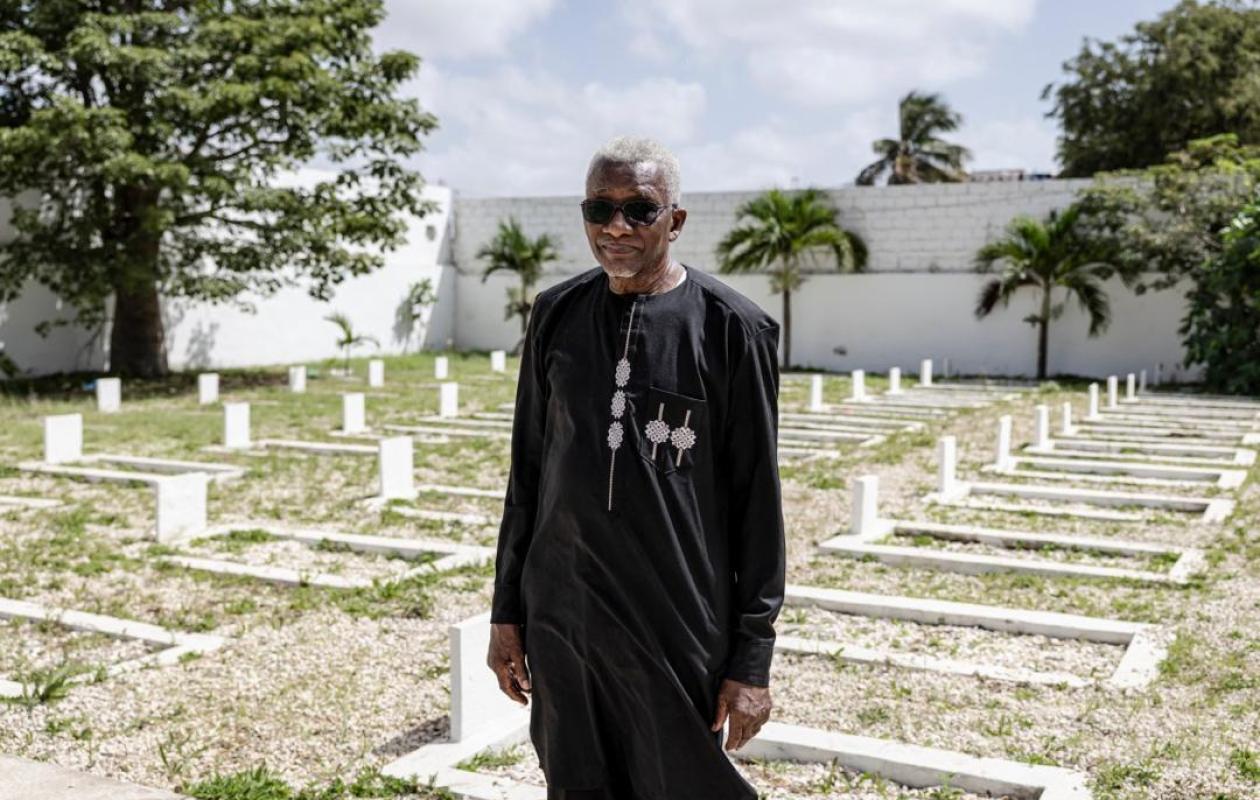
Thiaroye : des archéologues explorent un cimetière pour élucider le massacre de tirailleurs
Excavations, clods of earth alongside anonymous white graves, dislocated concrete slabs: the military cemetery of Thiaroye, near Dakar in Senegal, where the French army killed African riflemen demanding their pay in 1944, bears the scars of the unprecedented excavations that unearthed skeletons.
An AFP team was able to visit the site of these unprecedented excavations.
Boxes covered in blue plastic, buried in the area studied by archaeologists, emerge to the surface in places in this cemetery in the town of Thiaroye, near the eponymous military camp, site of the massacre of the riflemen.
On November 4, 1944, some 1,600 of them, former German prisoners of war, embarked from France for their country, after having fought for the French army during the Second World War. After their arrival at the Thiaroye camp, they revolted against the delay in the payment of their back pay.
On the morning of December 1, 1944, these riflemen, who came from several West African countries (including French Sudan - which became Mali -, Senegal, Ivory Coast, Guinea, and Upper Volta - which became Burkina Faso), were massacred by the French colonial army. The circumstances of the massacre, the number of those killed, and their burial sites remain unclear.
The trauma of this massacre remains acute in Senegal and in the countries concerned.
The Thiaroye cemetery was created in 1926 by colonial France to bury "native" soldiers. Riflemen killed on December 1, 1944, are buried there in mass graves, according to researchers.
The Senegalese army had prohibited access when these excavations began last May.
Due to Senegal's difficulties in accessing French colonial archives, it was necessary to "make the underground" of the cemetery containing remains speak, explains the director of archives and historical heritage of the Senegalese army, Colonel Saliou Ngom.
The cemetery has 202 anonymous white graves.
The excavations were conducted in the shade of one of the two large baobabs. It is "a calcicole tree, meaning it likes limestone. Where there are bones, there are often baobabs," says history and geography professor Mamadou Koné, technical advisor to the director of archives and historical heritage of the Armed Forces.
A White Paper written by researchers and submitted to Senegalese President Bassirou Diomaye Faye on October 16 describes the massacre of December 1, 1944, as "premeditated" and "covered up."
French authorities at the time gave a death toll of up to 70 riflemen. The "most credible estimates put the figure at 300 to 400," some of whom were buried in the cemetery, according to the White Paper.
For Colonel Ngom, "contrary to the thesis that there were no bodies (buried in the cemetery), archaeologists found seven skeletons. This is a very important step in the search for historical truth."
One of the archaeologists who led the excavations, Moustapha Sall, said that "seven tombs were excavated in the first batch (of graves) which has 34."
"One skeleton has a bullet in its left side (at) the location of the heart. Others lack a spine, ribs, or skull. Some people are buried with iron chains on their shins. This means they were subjected to violence," he said.
"The graves are later than the burials, and parts of the skeletons extend beyond the graves. One hypothesis is that these graves were built after the burials, or that it was a staging to make it look like a proper burial," explains Mr. Sall.
"Three of the seven skeletons found are in wooden caskets. Individuals are wearing boots, buttons, and collar tabs. Rings and finger rings have also been found in graves," he adds.
"The preliminary results do not allow us to answer all the questions (about the massacre). We need to supplement them with genetic studies. DNA samples will help determine the origins of the individuals. Ballistics experts will provide information on the military equipment found," including the nature of the bullet and the weapon used, Mr. Sall continued.
The Senegalese government has ordered a ground penetrating radar (GPR) to better explore the depths of the cemetery's subsoil where "the water table is outcropping," it said.
"We have been searching for historical truth for 81 years. If the subsoil gives us (this truth), there is nothing more significant," emphasizes Colonel Ngom.
President Faye, committed to promoting the memory of colonial soldiers, announced that he had approved the "continuation of archaeological excavations on all sites likely to contain mass graves."
In November 2024, as the 80th anniversary of the events of December 1944 approached, French President Emmanuel Macron acknowledged that French colonial forces had committed a "massacre" in Thiaroye.
Commentaires (4)
C’est du non-sens ce que vous faites
Mais la vérité sera connue,et les parents des défunts sauront la vérité, pourront faire le deuil.
Et après on va baisser la France
L Afrique doit impérativement coloniser la France ,massacrer les sales Blancs colons genocidaires esclavagistes de merde.
Des lâches qui n ont même pas le courage de donner les archives pour que la vérité soit connue.
Mais nous disons "merci" à Armelle Mabon,pour son travail dans la recherche de la vérité sur les atrocités commises par son pays.
Participer à la Discussion